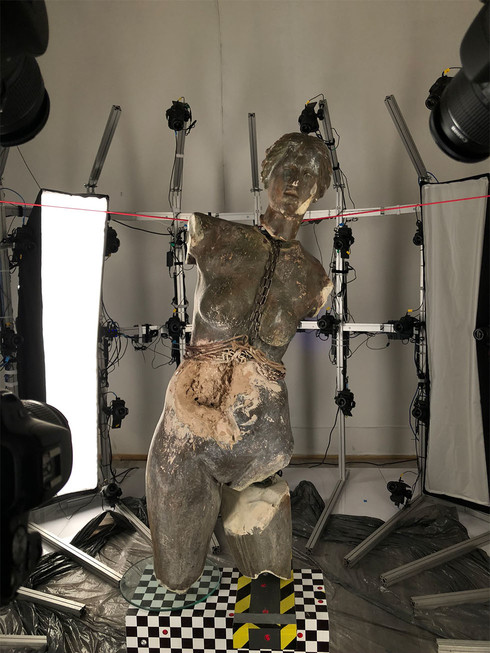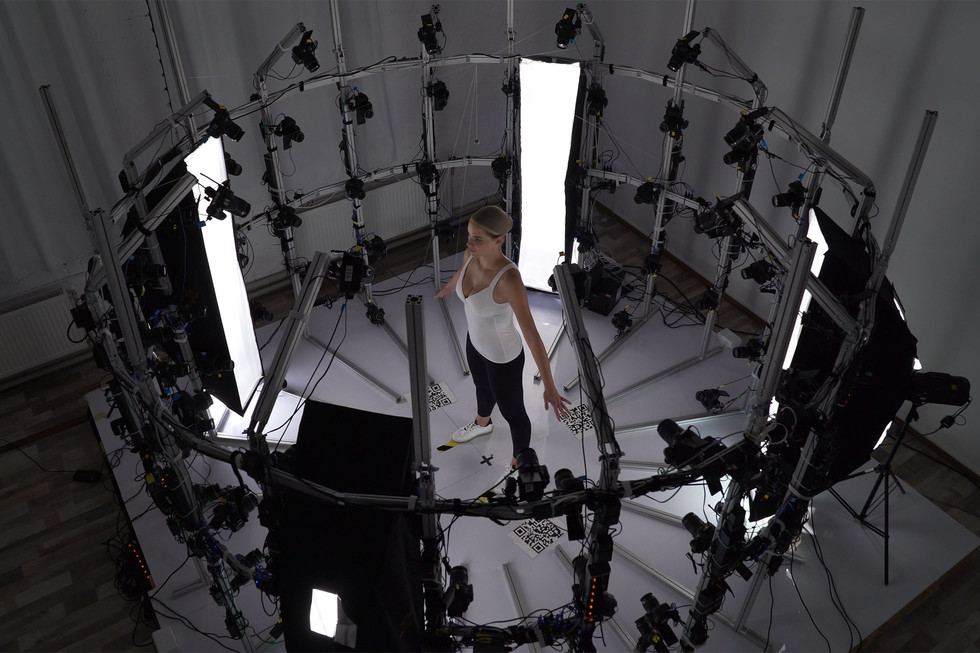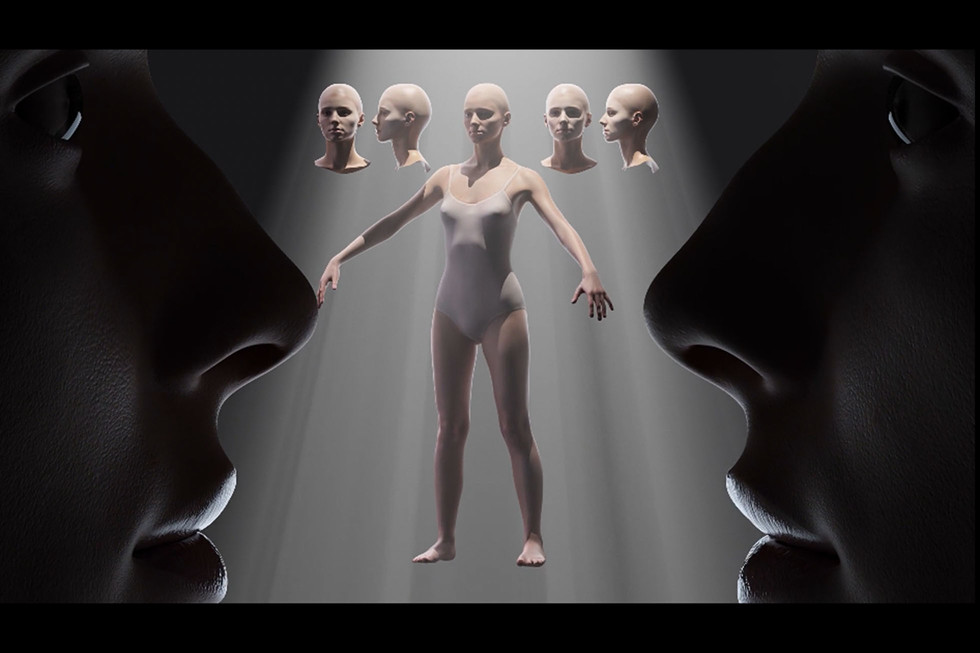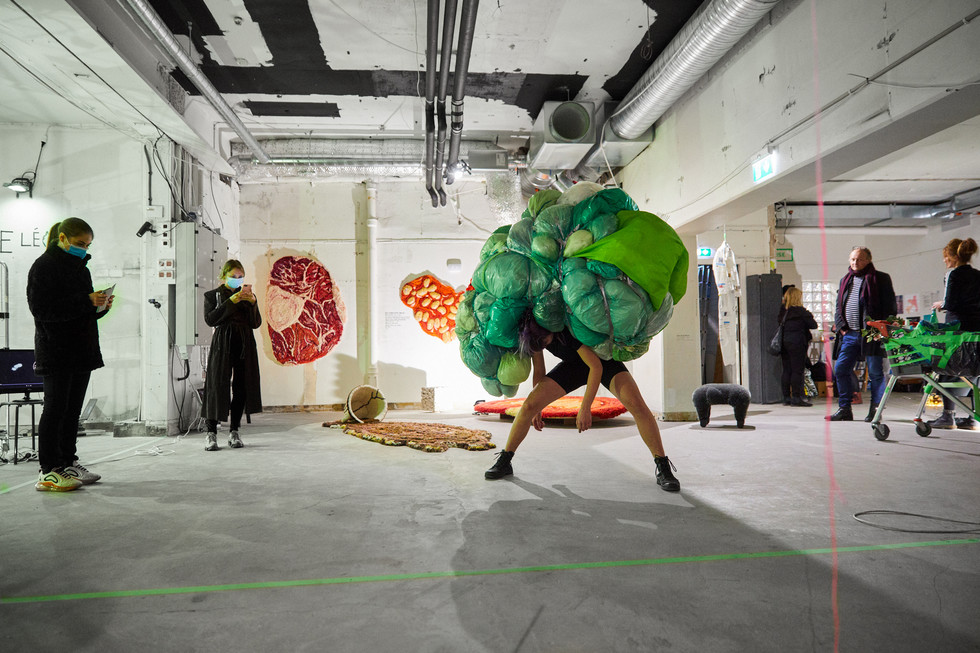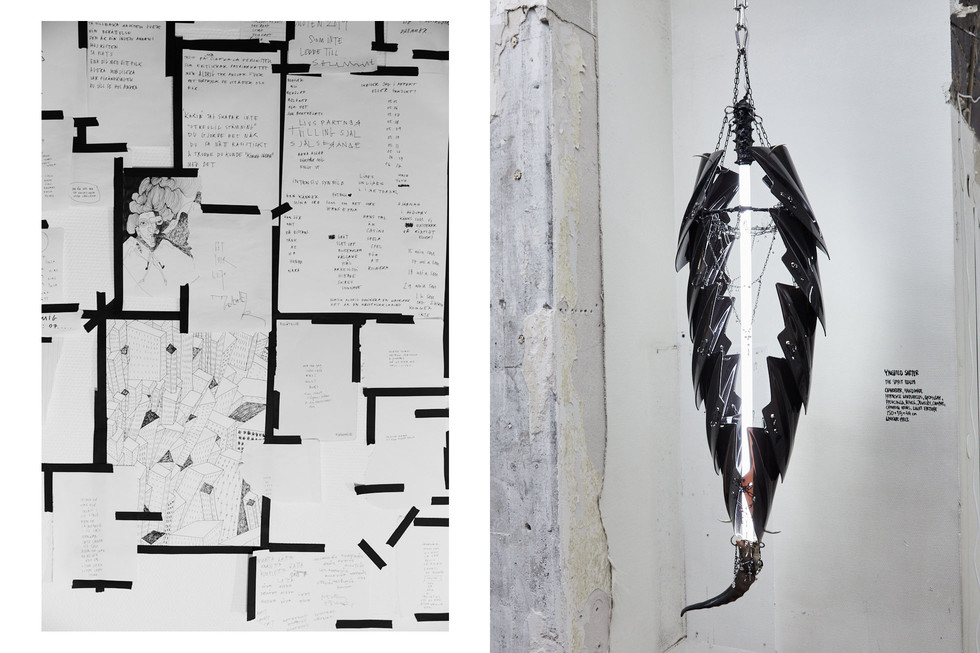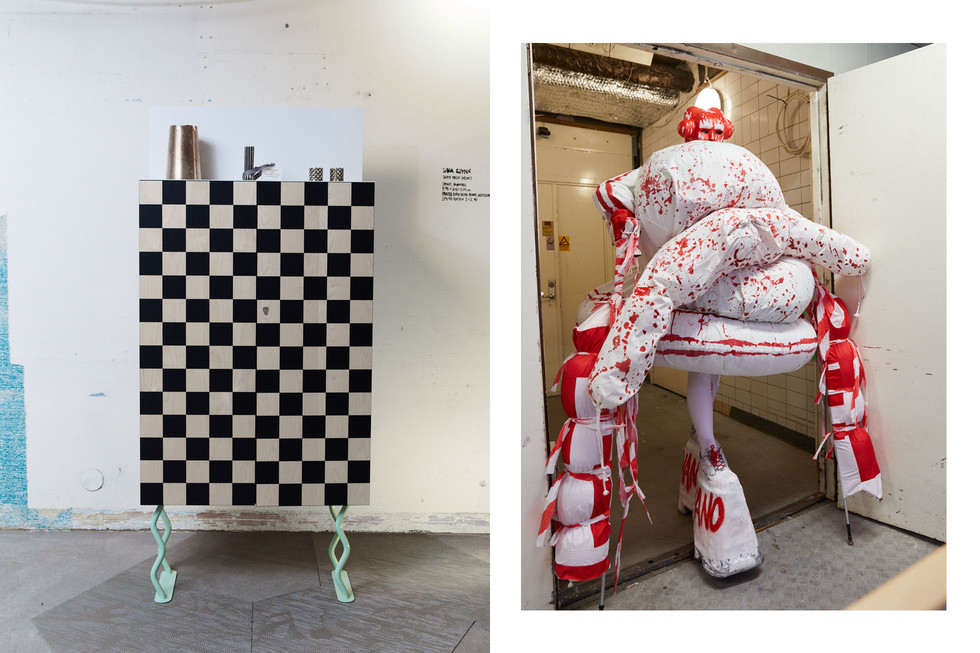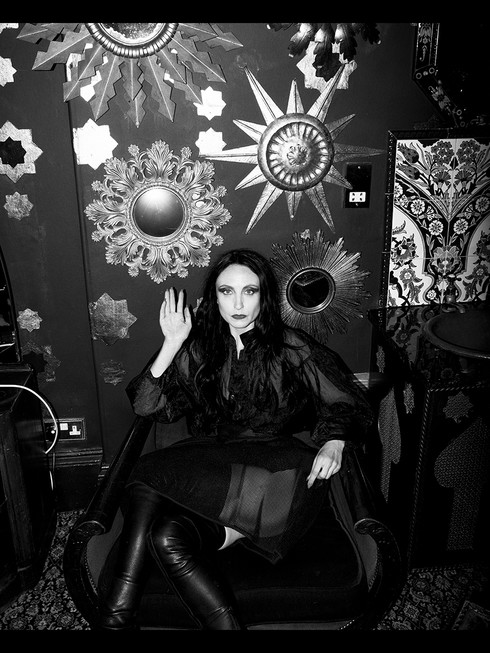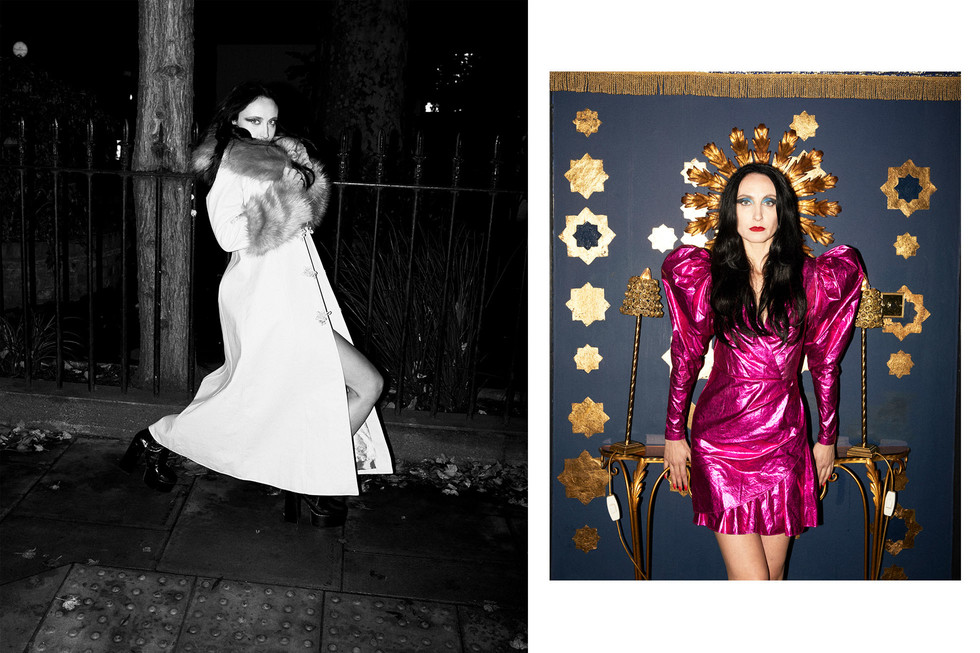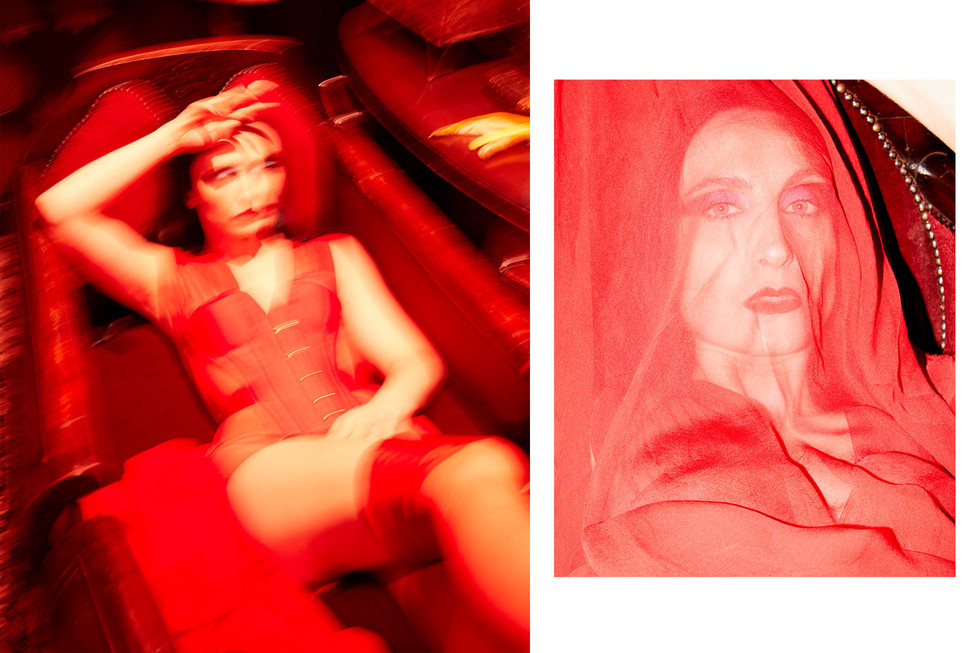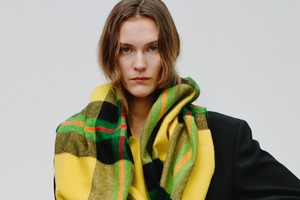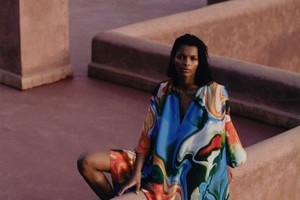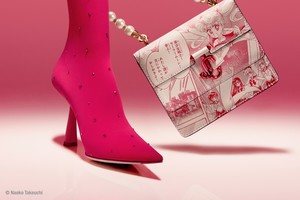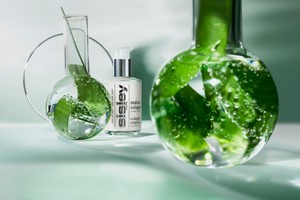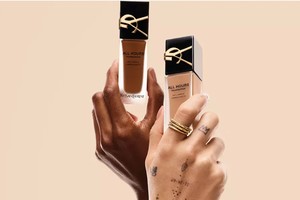DEEP3DSTUDIO: ONE 3D STEP BEYOND
Written by Ksenia Rundin by Sandra MyhrbergUkrainian Deep3dstudio is a pure 3D jeweller, putting the country on the digital business map. Being one of a kind in Ukraine and one of the few in the world, the company possess their key competence in photogrammetry – a method of establishing the shape, position in space and size of an object by using its photographic images. In other words, Deep3dstudio can reproduce a real physical object in 3D with dozens of photos of this object shot from all possible angles. Photogrammetry is a type of 3D scanning. Deep3studio’s technology is based on a hemispherical unique design with 85 DSLR cameras (Canon 200D) with a scanning object in the middle of each. An object can be a human or any inanimate object that fit in a scanner. With one click one can get 85 high-quality photos, from which then, with the help of special software, 3D model is assembled.
Starting their journey with a creative idea and love for modern technology, three men and a woman have in a short period of two years succeeded to establish a revolutionary 3D business. Multidimensional awareness and foresight allow this team to be ahead of their time, conceiving an extended reality for brands and products. Unwittingly, I think of a quote from “Dune” by Frank Herbert, saying that “Deep in the human unconscious is a pervasive need for a logical universe that makes sense. But the real universe is always one step beyond logic.” What is 3D, a logical universe we are all looking for or the real one, stepping beyond logic? I think, Deep3dstudio have found the golden mean between these two and now, with their inexhaustible curiosity and constant self-improvement, they creatively navigate through the digital jungle, offering intriguing solutions to different markets. Models created using photogrammetry techniques can be applied in a variety of educational programs, to visualize architectural and urban projects, in theatrical productions, at concerts, and in any other field, where digital visual content can be integrated. Our contributor and former editor Ksenia Rundin met two of the four founders of Deep3studio, Vadim Shestakov and Yevgenia Shestakova to talk about the 3D industry and their creative business.
Please tell us how it all started and what you do in your company?
Vadim: It started as an idea among three brothers, me, my brother and our cousin, who also is involved in the project. As we all, in one or another way, consider ourselves being people with some artistic ambitions and interests, who also fond of modern technology, we decided to combine those interests into one. Furthermore, we also thought that there was a niche in the market for 3D technology, what made us expect some commercial success. This is basically how it all started approximately two years ago. First, we came out with an idea, then we acquired all the equipment and constructed our rig-structure, which we designed ourselves. The aluminium profile is a made-to-order structure. Second, it took us about half a year to test the equipment and actually make the entire structure work the way it should. Last year in August we had our first employees.
It seems that you have come quite far being a company that started merely two years ago. Impressive! However, who came up with the design of the rig-station?
Yevgenia: This photo-gravity construction is not like a totally new thing in a world-wide scale. There are a lot of companies, who do the same product and use the same technique. As Vadim mentioned, we did a quick research and found out that there was no such technology in Kyiv and in Ukraine, in general, available for various users. This technology is most applicable for game developer companies, especially if they have a big budget to create such construction within their own production. There was no such thing openly available for other industries to be applied in other spheres of business and life. So, we decided that it was a great opportunity for us to create such construction with an option to develop this 3D creation here in Ukraine. And it was one of the main reasons why we decided to do it at the first stage. Vadim’s cousin, who is our creative director right now, is originally from the 3D industry himself with a ten years of design experience. Mainly, it was his idea and he wanted to realize it within the company he worked for. However, when he pitched his idea for us, we convinced him to do it on our own and develop it into a business where we would combine our creative ideas with technology. This is how we started. Going back to the question about our progress, yes, we are quite proud of our progress. Even though we have already done a lot, this is such a swiftly developing industry that it is never enough and never fast enough. You can always look at someone, who is a bit more successful with their company than you. So, you always have something to strive for. So, it is only a beginning for us and there is a lot left to do.
How many are you today, working at Deep3dstudio?
Yevgenia: Currently, we have six full-time designers, who constitute our creative team. Then, we also have four partners, managing all the issues and some admin and sales department with three full-time employees, as well. Thus, there are eleven people employed on a full-time basis.
Do you have an office or you work from home?
Yevgenia: During the period of lockdown, our employees worked mostly from home. However, we have this big rig-construction containing 85 cameras, whose mobility is not its strongest quality. Therefore, we still had to use the premises to have it kept somewhere. Our shootings were also conducted at our art studio. Now we try to slightly come back to the office, because the creative spirit develops better, when we are all gathered together as a team.
What background do you and your colleagues at Deep3dstudio have?
Yevgenia: As I previously mentioned, we have six designers and our creative director Andrew is the deep core and creative brain behind our project, totally from the 3D industry. Now, he is mostly practicing in managing and team-leading skills with our team members. In general, we have people with different backgrounds and different skill-levels. We started with juniors and together we tested all the pipelines and all the processes, teaching them everything. After we had our first project, we experienced some movements in our business processes and then we hired more experienced people to cover complicated tasks that our projects required. Now we can offer a great variety of services as we have specialists within different fields, for example, sculptors, who work with face-modelling. We also have specialists working with sculpt hard surface modelling, what means creating objects with hard surface like armours what requires a special type of modelling. Thus, we can consider ourselves being a full 3D-service production company, considering not merely 3D scanning but also creativity and post-production pipelines. It makes us a bit stronger in the business field.
What industries do you work with?
Yevgenia: I would say that we are open for everything what meets our business and artistic goals. Currently, we have clients in the game industry, where we work with indie game (alternative games to a more traditional entertainment products) developers. They are not any big companies but they already have their idea, their budget and they want to use the photogrammetric technology to create their photorealistic heroes with. We have also cooperated with film production and even in the U.S. and regions, like some companies in Los Angeles, who work directly with Hollywood and high standard film productions. Our experience embraces even video production, advertisement, fashion brands, both local and international.
We are also working on a big art project right now and it concerns theatre. Together with a big production team we are creating a pilot video format for “Theatre 360 degrees” project. The idea is to combine classic art of stage acting and new technologies, like ours. We are conceiving a high-end video version of a play called “The Stone Host” written by Ukrainian novelist Lesya Ukrainka, which is complemented with mastery, integrating animated 3D avatars of actors and objects directly on the stage. Our aim is to expend the limits of theatrical performance and to impress the spectator as never before. It is a unique experiment for Ukrainian cultural world so far. The premiere is set on November 17, 2020. Ten pilot streams are free and are available worldwide on 17-26 of November 2020. You can find more information here, so far in Ukrainian but information in English will soon be available: https://theatre360.com
Do you mostly work B2B or B2C as well?
Yevgenia: Mostly, it is business-to-business (B2B) up to 99 percent. We talk about business-to-consumer (B2C), when we are working with some public figures, like some Instagram persons, who are interested in having their own 3D copy.
You have mentioned that you work with both national and even international projects. Could you elaborate some more on that?
Yevgenia: Yes, we work with both national and international, because our product has no geographical limits and boundaries. We had projects with American companies, Australian companies, and even European firms. We are working on to promote this 3D creativity within the Ukrainian business environment. We are open for both world-wide co-operations and Ukrainian ones as well.
Could you please tell a bit more about your projects within fashion industry and art field?
Yevgenia: During the lockdown, all the 3D technology and digitalization started really blossoming and it concerned fashion and art industry as well. The 3D technology might be a well-known thing for the game industry but for such tender fields as art and fashion it is still rather novel. However, the reality made them to pay real attention to the digitalization, where 3D constitutes the most applicable and most smooth tool to illustrate one’s creativity to the world, which happened to be locked down. Thus, when the lock down became official, we received quite a few cooperation proposals, especially from the art and fashion industries. We have for example created an ad for Puma together with a Ukrainian and maybe even Russian celebrity, Nadya Dorofeeva. It was a viral advert created for Puma’s new footwear line that we together with other creatives helped to conceive. Nadya herself, Puma sport wear and sneakers were scanned in our 3D scanner and reconstructed by us into 3D models.
Furthermore, we also constructed photorealistic 3D copy of top model Anna Shoot (@anna.shoot) for a music video of one famous Ukrainian singer and dancer. Our recent out-of-the-box project was to recreate the Alice in Wonderland vibe for a bold fashion brand TTSWTRS (@ttswtrs) in VR. 3D models of the new collection were integrated into surreal VR content, which became viral (look here).
Then, as I already mentioned this epic cooperation for digitalisation of Ukrainian theatre. It is a full-scope production and we are very excited by being part of this project, which is one of the first projects ever made in Ukraine, combining real life, 3D effects, video and advertising. On a regular basis, we cooperate with a company in LA, who creates 3D models together with us for different Hollywood productions. It is very fascinating, as all the fully dressed and wearing makeup actors, participating in a film, are usually put through a 3D scanner. After the film is shot, the director might want to conduct some changes on the actors in some scenes. Then the 3D company helps the production to switch the actor with his/her 3D model to conduct these changes. And our task is to create such 3D models. Sometimes we work with people form crowd scenes and sometimes it could be famous actors. And when you afterwards seeing them on a white screen, you cannot help thinking that this is maybe exactly the model I have created.
How do you see the future of 3D? Where are we in 2-3 years as consumers?
Vadim: 3D is the future, as we all can see in VR- and AR-industry, visual effects industry, gaming industry, film industry. Everything is developing very fast now, especially after the lockdown. Considering the implication of the pandemic, people are staying home and as a result consuming much more of the digital content than before. Therefore, we think that 3D will be developing very fast. Already now we see how the new ground-breaking technology being used in gaming, alternative-reality technology. Hence, our product will create a high demand. Nevertheless, we create a lot of challenges for ourselves due to the industry requirement of being in line with the progress. It means that in order to be able to create a competitive product, we constantly learn new software and upgrade our technology and hardware. As you see, there is a flip side of the coin as well. And it makes us even more excited about our future.
Yevgenia: Frankly speaking, we think that there is hardly any alternative, because people are going to dive deeper into the new technologies and digitalization as such. There is no other way, as this is the future.
Today, we can already see some retailers speaking about digitally generated clothes. Is it something you work with or have any plans to do?
Yevgenia: We are looking into this field very precisely. Recently, young entrepreneur of Ukrainian origin Daria Shapovalova, who is appointed to be one of BoF500 (Business of Fashion’s definitive professional index of the people shaping the fashion industry), created her own 3D platform called Dress-X, where people can purchase digital clothing for the purpose of digital content creation. You can purchase a digital garment for the price of 35-120 U.S. dollars. This is amazing concept where sustainability and fast content change are merged into one with the help of technology. Clothes you buy are digitally fitted for you. Thus, now any designers in Ukraine want to have 3D copies of their own collections. We have done something similar with some local designers that I have already mentioned. We want to provide some more sophisticated services in this field, and it is also connected with some additional new skills. One thing is to create a 3D model of one object, but it is completely another thing to create a 3D model of a dress with its texture and fabric, making it move like the real one. Different fabrics behave differently, depending on the texture and it creates a real challenge for the design technology. We are focused on escalating our skills in 3D clothes production rapidly and have already presented our ideas to our fashion clients, encouraging them to create their collections together with us. It could be something about sustainability or a virtual shop of a client’s products in order to have those more worldwide spread.
Where are we moving towards?
Yevgenia: We are going to sit home naked and totally digitalized and our coolness will be measured by the content of our social media account. It is going to be about digital impression.
Yes, it is just perfect, with a digital dress and laboratory-grown diamond anyone can have a dream wedding.
Yevgenia: It makes affordable such things that you would have never thought of buying because it is sometimes illogical to spend a huge sum of money on a dress you would wear once at the best scenario. Buying a digital dress may give you the same experience and the same level of satisfaction as an analog one would. Maybe, we can make people happier or maybe we make them suffer even more. Who knows…
Are you able to create Lil Miquela? Or you might have a better idea?
Yevgenia: We would be happy to create something like this, a digital person and to make it live its own life. However, we have to understand that projects like this are a full-time project, where an entire team working to keep it alive. Meanwhile, we are currently in negotiations for creating such a product to some of our potential clients with a certain connection to their product, like a brand ambassador. It could be suitable for a very narrative advertising company. Concerning the idea to conceive such a person for our own creative ideas, we would make something more dramatic, with steampunk details. Hence, technically we can do it. Yes, we want to do this for both our own goals and for our clients, and we also consider it as a product.
We speak about virtual reality versus augmented reality. Is there any technology that merge them both into one hybrid? How does it work?
Yevgenia: Yes, it is. It is called extended reality, XR and constitutes a combination of augmented and alternative reality. You fill in the space around with 3D objects, while interacting with them. We mainly work with augmented reality (AR). It is a bit easier to integrate 3D models into it, what makes it more applicable than virtual reality (VR) and easier for customer to cope with. Recently, we discussed an option of creating an educational product in AR, stuffed with 3D content such as models and objects, for example for medical staff training in using new techniques or new equipment in surgery. There are such platforms created in Ukraine within marine engineering field, which teach you how to conduct repairs on different parts of a vessel, e.g. machinery, in virtual reality. You can train without risking to damage anything.
What makes your company unique?
Vadim: We are the only company in Ukraine and also the only one, who has such kind of rig-structure, what allows us to create our 3D models in a particular way. There are not so many such companies worldwide either.
Yevgenia: Besides all, our location gives us a rare opportunity to make 3D models with beautiful people and amazing landscapes. Our geographical position allows us to provide different intriguing locations as well as of apocalyptic nature as of dreamlike ones.
Vadim: We can recreate the Soviet era or create a Blade-Runner inspired futuristic atmosphere.
Yevgenia: Game developers just love it! Last but not the least, our experience and quality keep a high standard that has actually been approved by the Hollywood standards.
What makes your company unique?
Vadim: We are the only company in Ukraine and also the only one, who has such kind of rig-structure, what allows us to create our 3D models in a particular way. There are not so many such companies worldwide either.
Yevgenia: Besides all, our location gives us a rare opportunity to make 3D models with beautiful people and amazing landscapes. Our geographical position allows us to provide different intriguing locations as well as of apocalyptic nature as of dreamlike ones.
Vadim: We can recreate the Soviet era or create a Blade-Runner inspired futuristic atmosphere.
Yevgenia: Game developers just love it! Last but not the least, our experience and quality keep a high standard that has actually been approved by the Hollywood standards.
What is your dream project?
Vadim: We would like to create some either movie or maybe a computer game from scratch, something big-scaled and groundbreaking. Our dream is to become a full-scope studio. A movie for Netflix, in a kind of “Dune”-style would be nice.

